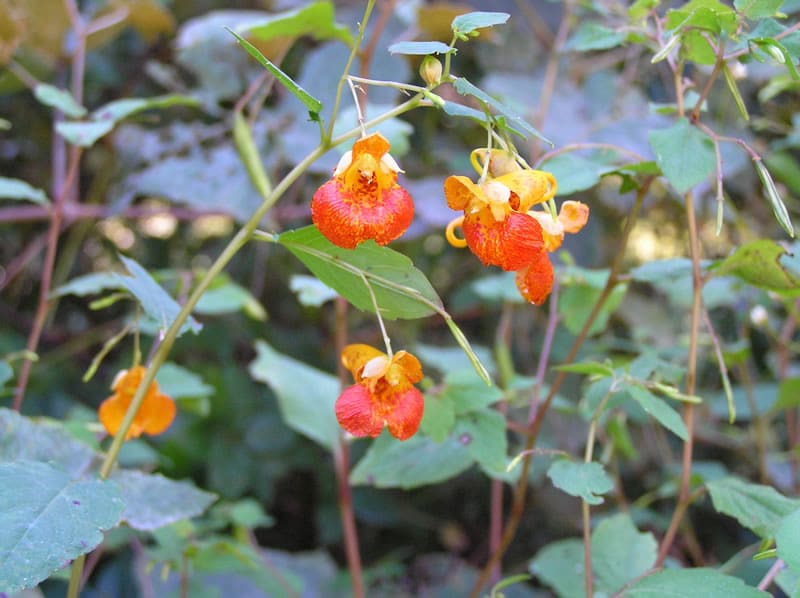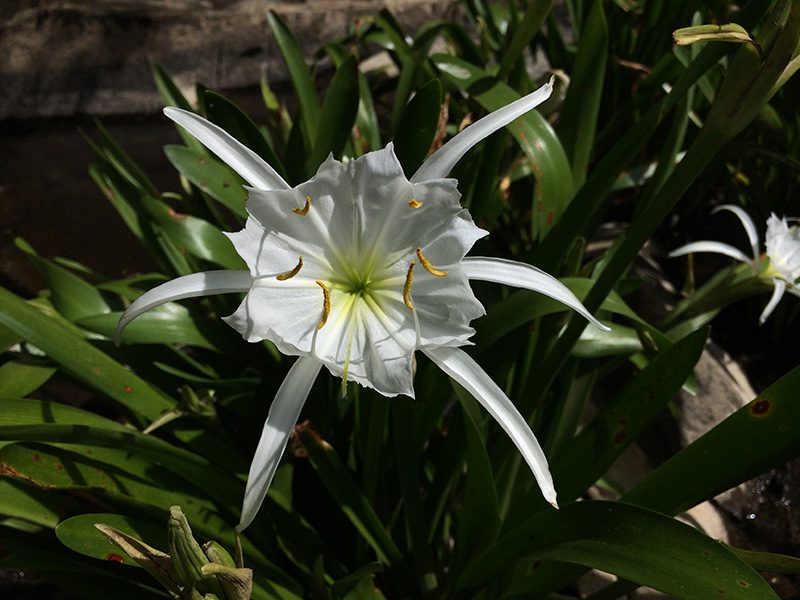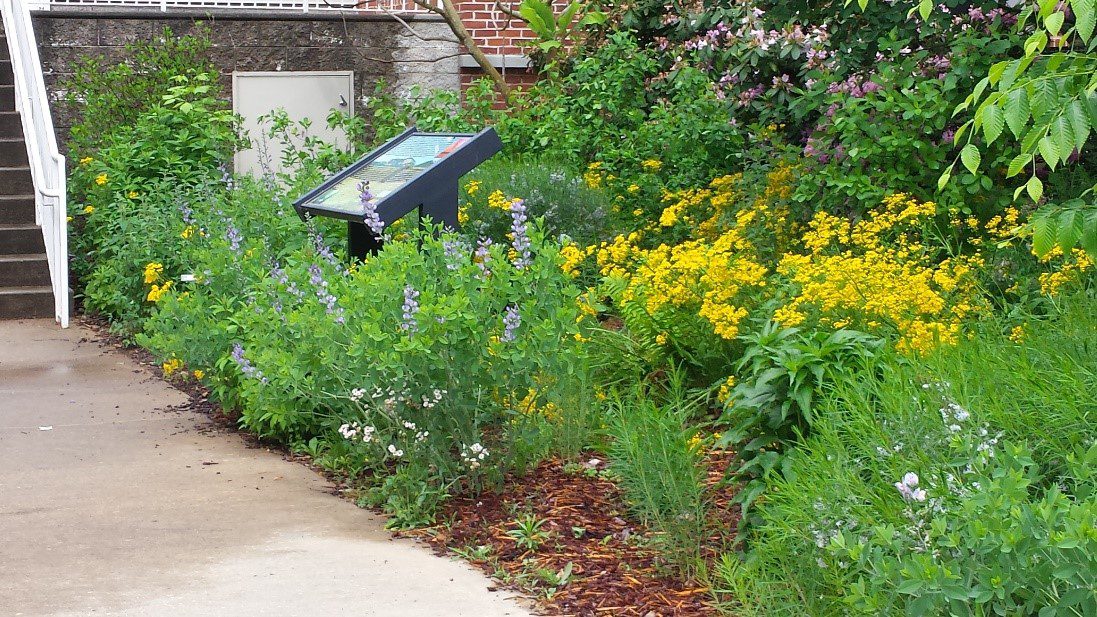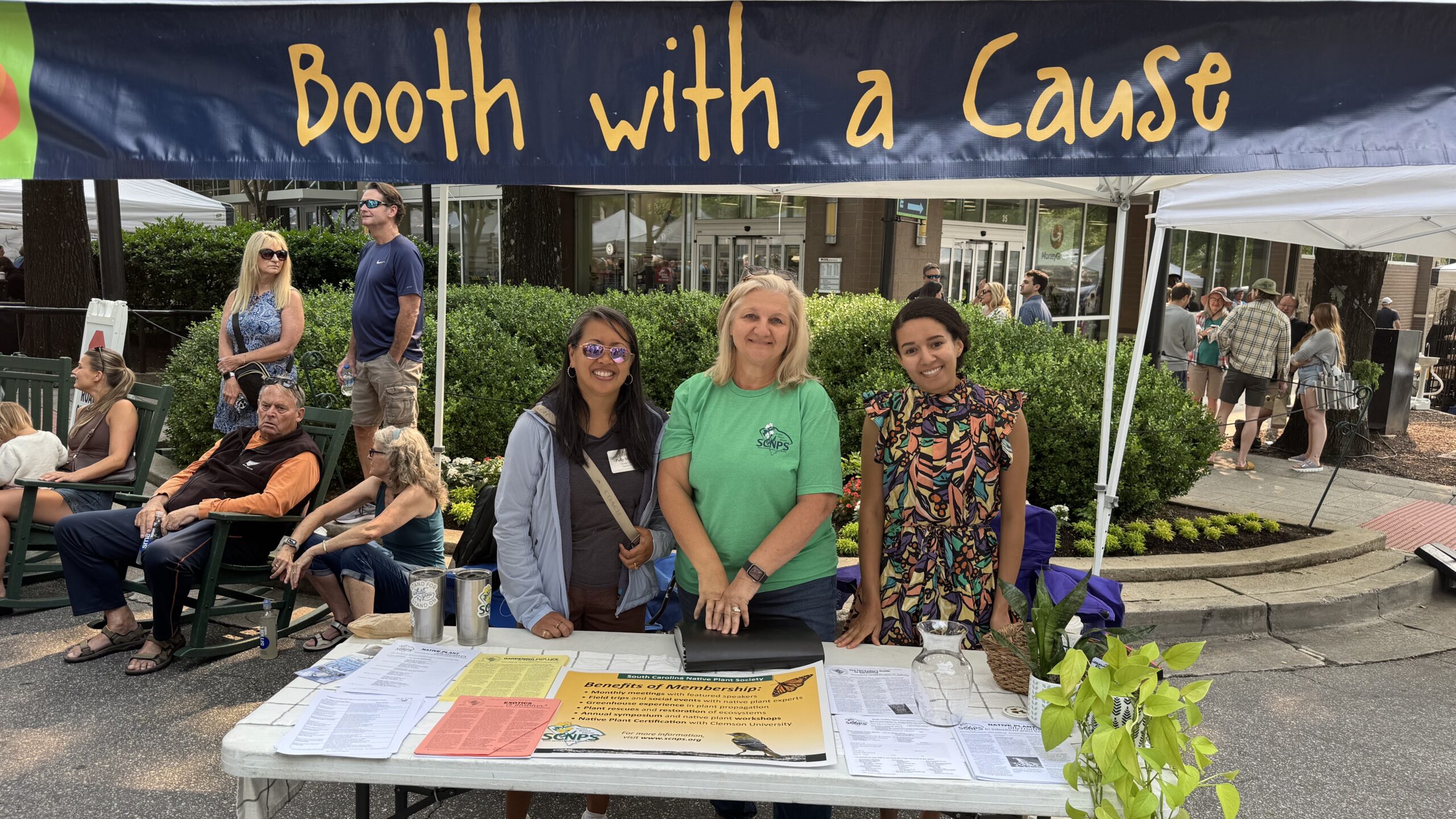by Chuck Hubbuch
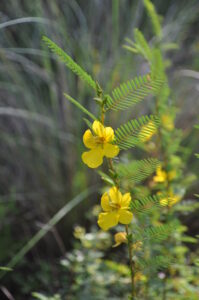
Photo Credit: Chuck Hubbuch
Most gardeners are familiar with exotic annuals like petunias, marigolds, and impatiens. South Carolina has its own native wildflowers with annual life cycles that offer unique ecological benefits and vibrant beauty. When given the right conditions, these native plants will produce seeds that germinate the following spring. The Spring 2024 native plant sale highlighted some of these wildflowers. If they prove popular, the nursery will offer them in future sales.
Common Partridge Pea
Chamaecrista fasciculata
An upright plant that reaches about 18 inches in height, common partridge pea produces showy yellow flowers that attract bumblebees and carpenter bees. The plant serves as a host for sulphur butterfly larvae. Growing best in well-drained soils with sun or partial sun exposure, it spreads by seeds without being overly aggressive.

Sensitive Partridge Pea
Chamaecrista nicitans
This shorter, bushier species has smaller yellow flowers, often hidden in its dense foliage. These flowers attract smaller native bees, and sulphur butterfly larvae also feed on it. It thrives in the same conditions as C. fasciculata, and both species often coexist in nature. Its fine-textured foliage and compact habit make sensitive partridge pea suitable for elegant potted displays.

Photo Credit: Janie Marlow, namethatplant.net
Wild Carrot
Daucus pusillus
Photo Credit: Janie Marlow, namethatplant.net
A native relative of Queen Anne’s lace (Daucus carota), wild carrot grows to 18-24 inches tall. The flower cluster is smaller and more open than its weedy cousin. Its flowers attract a variety of pollinators and provide a host for the black swallowtail butterfly. Wild carrot tolerates well-drained soils and prefers a sunny site.

Blanket Flower
Gaillardia pulchella
Though its nativity is debated, some believe blanket flower originated in Texas and spread eastward. With red-and-yellow daisy-like flowers, it attracts butterflies and other pollinators. It grows well in sunny, well-drained sites. Though a perennial in warmer climates, it’s usually killed by the Upstate’s winters. To continue cultivating it, save seeds in an envelope indoors to plant in spring.

Photo Credit: Janie Marlow, namethatplant.net
Spotted Jewelweed
Impatiens capensis
Photo Credit: Janie Marlow, namethatplant.net
One of the native Impatiens species in South Carolina, spotted jewelweed can reach three feet or more in height and blooms in late summer and fall. Its orange flowers attract hummingbirds and various insect pollinators. It prefers shady, consistently moist sites. Nicknamed touch-me-not, its ripe seed capsules burst open when touched, throwing seeds several feet away. Some tout its sap as a treatment for poison ivy.
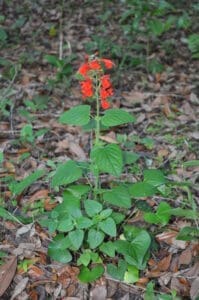
Wild Scarlet Sage
Salvia coccinea
Photo Credit: Chuck Hubbuch
Another potential Texas native that might not be truly indigenous to South Carolina, wild scarlet sage is the only plant on this list readily found in the nursery trade. It’s available as seed and in a few named cultivars. This upright plant can grow to three feet or taller, with bright red flower spikes that attract hummingbirds and various insect pollinators. Like blanket flower, it’s perennial in warm climates but typically killed by Upstate winters. Save seeds indoors to sow next spring.
The Upstate Native Nursery welcomes suggestions and seeds of other native annuals our members think worthy of cultivation. Supporting these plants helps nurture local biodiversity while adding beauty and variety to gardens across the region.

